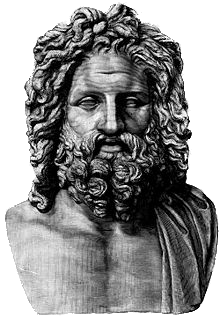(Created page with "video|right|300px right|300px Write the first paragraph of your page here. ==Section heading== Write the first section of your pag...") Tag: rte-wysiwyg |
No edit summary Tag: rte-wysiwyg |
||
| Line 1: | Line 1: | ||
| − | [[File:Placeholder|video|right|300px]] [[File:Placeholder|right|300px]] |
+ | [[File:Placeholder|video|right|300px]] [[File:Placeholder|right|300px]] |
| + | |||
| − | Write the first paragraph of your page here. |
||
| + | |||
| + | In Greek mythology, '''Amalthea''' or '''Amaltheia''' (Greek: Ἀμάλθεια) is the most-frequently mentioned foster-mother of Zeus. Her name in Greek ("tender goddess") is clearly an epithet, signifying the presence of an earlier nurturing goddess, whom the Hellenes, whose myths we know, knew to be located in Krete, where Minoans may have called her a version of "Dikte".<sup class="reference" id="cite_ref-2">[https://en.wikipedia.org/wiki/Amalthea_(mythology)#cite_note-2 <u>[2]</u>]</sup> Amalthea is sometimes represented as the [https://en.wikipedia.org/wiki/Goat <u>goat</u>] who suckled the infant-god in a cave in Cretan Mount Aigaion ("Goat Mountain"),<sup class="reference" id="cite_ref-3">[https://en.wikipedia.org/wiki/Amalthea_(mythology)#cite_note-3 <u>[3]</u>]</sup> sometimes as a goat-tending [https://en.wikipedia.org/wiki/Nymph <u>nymph</u>]<sup class="reference" id="cite_ref-4">[https://en.wikipedia.org/wiki/Amalthea_(mythology)#cite_note-4 <u>[4]</u>]</sup> of uncertain parentage (the daughter of [https://en.wikipedia.org/wiki/Oceanus <u>Oceanus</u>], Haemonius, Olenos,<sup class="reference" id="cite_ref-5">[https://en.wikipedia.org/wiki/Amalthea_(mythology)#cite_note-5 <u>[5]</u>]</sup> or—according to Lactantius—[https://en.wikipedia.org/wiki/Melisseus <u>Melisseus</u>]<sup class="reference" id="cite_ref-6">[https://en.wikipedia.org/wiki/Amalthea_(mythology)#cite_note-6 <u>[6]</u>]</sup>), who brought him up on the milk of her goat.<sup class="reference" id="cite_ref-7">[https://en.wikipedia.org/wiki/Amalthea_(mythology)#cite_note-7 <u>[7]</u>]</sup> The possession of multiple and uncertain mythological parents indicates wide worship of a deity in many cultures having varying local traditions. Other names, like [https://en.wikipedia.org/wiki/Adrasteia <u>Adrasteia</u>], Ide, the nymph of [https://en.wikipedia.org/wiki/Mount_Ida_(Crete) <u>Mount Ida</u>], or [https://en.wikipedia.org/wiki/Adamanthea <u>Adamanthea</u>], which appear in mythology handbooks,<sup class="reference" id="cite_ref-8">[https://en.wikipedia.org/wiki/Amalthea_(mythology)#cite_note-8 <u>[8]</u>]</sup> are simply duplicates of Amalthea. |
||
| + | |||
| + | In the tradition represented by [https://en.wikipedia.org/wiki/Hesiod <u>Hesiod</u>]'s ''[https://en.wikipedia.org/wiki/Theogony <u>Theogony</u>]'', Cronus swallowed all of his children immediately after birth. The mother goddess [https://en.wikipedia.org/wiki/Rhea_(mythology) <u>Rhea</u>], Zeus' mother, deceived her brother consort Cronus by giving him a stone wrapped to look like a baby instead of Zeus. Since she instead gave the infant Zeus to Adamanthea to nurse in a cave on a mountain in Crete, it is clear that Adamanthea is a doublet of Amalthea. In many literary references, the Greek tradition relates that in order that [https://en.wikipedia.org/wiki/Cronus <u>Cronus</u>] should not hear the wailing of the infant, Amalthea gathered about the cave the [https://en.wikipedia.org/wiki/Kuretes <u>Kuretes</u>] or the [https://en.wikipedia.org/wiki/Korybantes <u>Korybantes</u>] to dance, shout, and clash their spears against their shields. |
||
==Section heading== |
==Section heading== |
||
Revision as of 23:00, 15 September 2015
In Greek mythology, Amalthea or Amaltheia (Greek: Ἀμάλθεια) is the most-frequently mentioned foster-mother of Zeus. Her name in Greek ("tender goddess") is clearly an epithet, signifying the presence of an earlier nurturing goddess, whom the Hellenes, whose myths we know, knew to be located in Krete, where Minoans may have called her a version of "Dikte".[2] Amalthea is sometimes represented as the goat who suckled the infant-god in a cave in Cretan Mount Aigaion ("Goat Mountain"),[3] sometimes as a goat-tending nymph[4] of uncertain parentage (the daughter of Oceanus, Haemonius, Olenos,[5] or—according to Lactantius—Melisseus[6]), who brought him up on the milk of her goat.[7] The possession of multiple and uncertain mythological parents indicates wide worship of a deity in many cultures having varying local traditions. Other names, like Adrasteia, Ide, the nymph of Mount Ida, or Adamanthea, which appear in mythology handbooks,[8] are simply duplicates of Amalthea.
In the tradition represented by Hesiod's Theogony, Cronus swallowed all of his children immediately after birth. The mother goddess Rhea, Zeus' mother, deceived her brother consort Cronus by giving him a stone wrapped to look like a baby instead of Zeus. Since she instead gave the infant Zeus to Adamanthea to nurse in a cave on a mountain in Crete, it is clear that Adamanthea is a doublet of Amalthea. In many literary references, the Greek tradition relates that in order that Cronus should not hear the wailing of the infant, Amalthea gathered about the cave the Kuretes or the Korybantes to dance, shout, and clash their spears against their shields.
Section heading
Write the first section of your page here.
Section heading
Write the second section of your page here.
